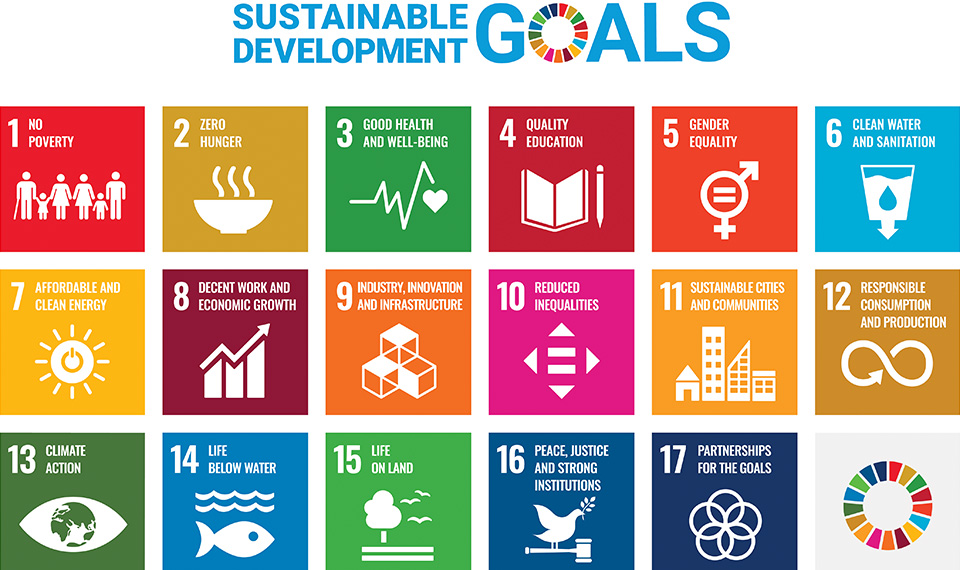Reconstruction from the Great East Japan Earthquake and the Future: Contribution to SDGs

An engagement meeting aimed at further development of the SDGs bond market was held between Namie Town and the Urban Renaissance Agency. Namie Town has been investing in SDGs bonds while giving due consideration to security and efficiency, as the city is recovering from the complex disaster caused by the earthquake and tsunami triggered by the Great East Japan Earthquake and the nuclear disaster caused by the damage to the Fukushima Daiichi Nuclear Power Station. The Urban Renaissance Agency is an independent administrative agency that has continuously issued social bonds since fiscal year 2020 and started issuing sustainability bonds this fiscal year.

Introduction
In recent years, the share of ESG bonds in the bond market has been increasing rapidly with increasing awareness of ESG issues. ESG bonds help to solve social issues if they are social bonds, help to solve environmental issues if they are green bonds, and help to solve sustainability issues if they are sustainability bonds. From an investor's point of view, ESG bonds have an added incentive of contributing to solving these issues in addition to their marketability as bonds that earn yields based on scheduled redemptions.
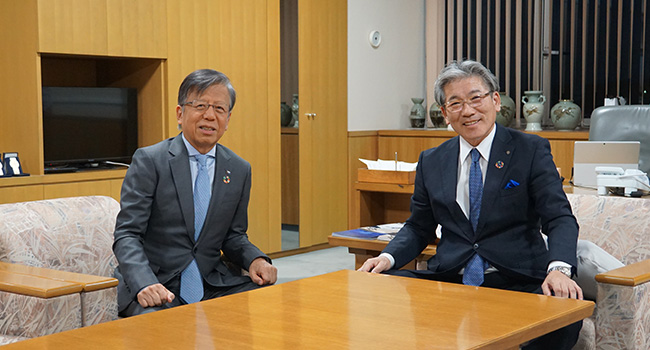
Namie Town purchased the sustainability bonds that the Urban Renaissance Agency (UR) started issuing this fiscal year, after Namie Town made an investment declaration. Namie Town and UR have a relationship through reconstruction support projects following the Great East Japan Earthquake. Based on this relationship, a meeting between Namie Town Mayor Eiko Yoshida and UR President Masahiro Nakajima was held at Namie Town Hall on January 15, 2024. During the meeting, President Nakajima expressed his gratitude to Mayor Yoshida for the bond purchase and the two discussed the reconstruction support projects that UR will implement in Namie Town.
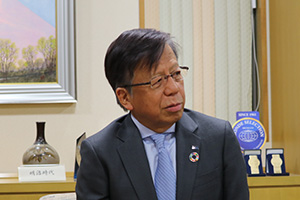
Urban Renaissance Agency President Mr. Nakajima
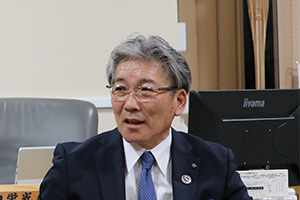
Namie Town Mayor Mr. Yoshida
Based on this, a working-level engagement meeting between Namie Town and UR was held at Namie Town Hall on February 14, 2024.
Participants
| Namie Town | Urban Renaissance Agency(UR) | Nomura Securities Co., Ltd. |
|---|---|---|
|
|
|
Aihara:
Today, in the form of an engagement meeting, we will hear from Namie Town and the Urban Renaissance Agency, who have been deeply involved in reconstruction support projects following the Great East Japan Earthquake, about their respective organizations and SDGs initiatives. First, we would like to hear from the Urban Renaissance Agency about their projects.
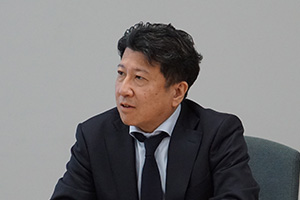
Urban Renaissance Agency
Deputy Director Mr. Hirasawa
Mr. Hirasawa:
Our agency started as the Japan Housing Corporation, which was established to address the housing shortage caused by the influx of people into urban areas during the post-war period of rapid economic growth. Over the past 60 years, we have created social value through community and lifestyle development while confronting the social issues of the times. We have worked to resolve policy and regional issues, such as the improvement of good living environments by proposing new housing styles such as eat-in kitchens, and the improvement of urban attractiveness and disaster preparedness by utilizing business methods such as redevelopment and land readjustments.
Our business consists of three main pillars.
The first pillar is urban revitalization. We are promoting urban revitalization to create safe and attractive communities by strengthening the international competitiveness of cities and improving disaster prevention. We are also focusing on revitalization of regional cities to revitalize regional economies and realize compact cities. We support urban revitalization while building strong partnerships with local governments by leveraging the know-how accumulated through our experience in urban revitalization, as well as our position and authority as a policy implementation agency.
The second is the rental housing business. In addition to providing a safe, secure, and comfortable living environment for the people living in UR rental housing, we are also working with local stakeholders to create homes and communities where a wide range of age groups can continue to live healthy lives. In order to respond to local social issues, including housing complexes, such as the declining birthrate and aging population and the thinning out of communities, we are supporting resident activities and attracting facilities that are needed in the community.
The third pillar is the reconstruction support business following the Great East Japan Earthquake. After the Great East Japan Earthquake, we placed the highest priority on reconstruction support in the disaster-stricken areas. Immediately after the earthquake, we dispatched staff to the affected areas to provide recovery support. We have since been commissioned by Namie Town and 26 other disaster-stricken municipalities to promote reconstruction and community development. Projects for urban reconstruction and public housing development in the tsunami-stricken areas were completed in all areas by fiscal 2021. During the Phase 2 Reconstruction and Revitalization Period, which began in fiscal 2021, we have continued to provide both physical and intangible support in the areas affected by the nuclear disaster in Fukushima Prefecture in cooperation with the national government and local governments.
Aihara:
Thank you for explaining the wide-ranging projects being implemented by the Urban Renaissance Agency. Could you also tell us about the projects in Namie Town with respect to earthquake reconstruction support?
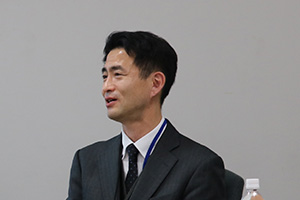
Urban Renaissance Agency Director Mr. Shimizu
Mr. Shimizu:
The areas affected by the nuclear disaster in Fukushima Prefecture are recovering from the situation of having no population and no economic activity, and UR is promoting support for reconstruction development through a combination of physical and intangible measures, such as support for reconstruction base development projects and building improvement projects in Namie, Futaba, and Okuma, as well as support for regional revitalization to expand the exchange and related populations and create prosperity. Here in Namie Town, we are supporting reconstruction base development in three districts. In Tanashio district, we were commissioned to develop an industrial park in 2017, and we completed the delivery of housing in March 2020. In Minami Industrial Park, we were commissioned to provide support to entities that placed orders for infrastructure development in fiscal 2019, and we completed this in fiscal 2022.
At present, we are commissioned to carry out execution management, general coordination, and infrastructure development for a reconstruction base development project in the area around Namie Station, which is the leading development area, in order to realize the "Namie Station Area Grand Design Basic Plan" for the reconstruction and revitalization of the entire downtown area of Namie Town. In addition, we are also providing non-infrastructure support on the intangible side, such as operating "Namiie," an information dissemination and exchange space, as a place to disseminate information on community development and to use it as a community exchange hub.
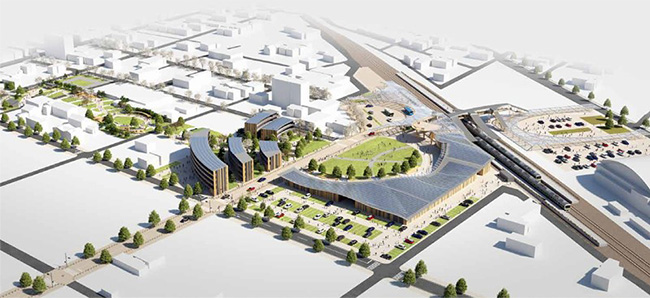
Area image of Namie Station vicinity (source: Namie Town)
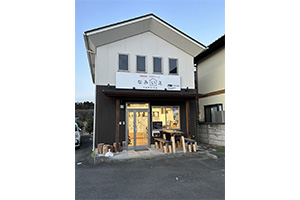
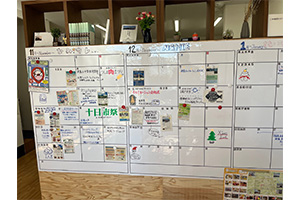
Aihara:
That gives us a good understanding of the projects undertaken by the Urban Renaissance Agency in Namie Town. Next, could you please introduce Namie Town?
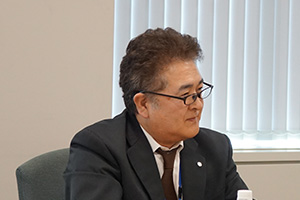
Namie Town Director Mr. Yoshida
Mr. Yoshida:
Namie Town in Fukushima Prefecture is located in the northern part of Hamadori (coastal area) in Fukushima Prefecture and is in Futaba County. Namie Village was established in 1889 under the Town and Village Act and became Namie Town in 1900. In October 1953, Namie Town was merged with Ukedo Village and Kiyohashi Village, and on May 1, 1956, Namie Town was merged with Ohbori Village, Karino Village, and Tsushima Village to form the current Namie Town. Namie Town is surrounded by the sea, mountains, and rivers, and is also an attractive place for food created by its rich natural bounty. It is also famous for its specialty products such as Ohbori Soma ware (pottery) and Namie Yakisoba.
The Great East Japan Earthquake on March 11, 2011, caused enormous damage in eastern Japan, centered on Fukushima, Miyagi, and Iwate. Due to the accident at Tokyo Electric Power Company’s Fukushima Daiichi Nuclear Power Station, residents of towns and villages in Futaba County were forced to evacuate, and Namie Town's 21,000 residents became scattered across the country.
In April 2013, zones in preparation for the lifting of the evacuation order, restricted living areas, and difficult-to-return areas were designated in descending order of radiation levels in the air. As a result of intensive decontamination, infrastructure restoration, and restoration of basic living infrastructure, the evacuation order was lifted on March 31, 2017. Residents are still unable to live in difficult-to-return areas where the evacuation order continues, but in December 2017, a part of the difficult-to-return area was designated as a Designated Reconstruction and Revitalization Base Area, and the national government proceeded with decontamination and infrastructure restoration, and the evacuation order was lifted on March 31, 2023.
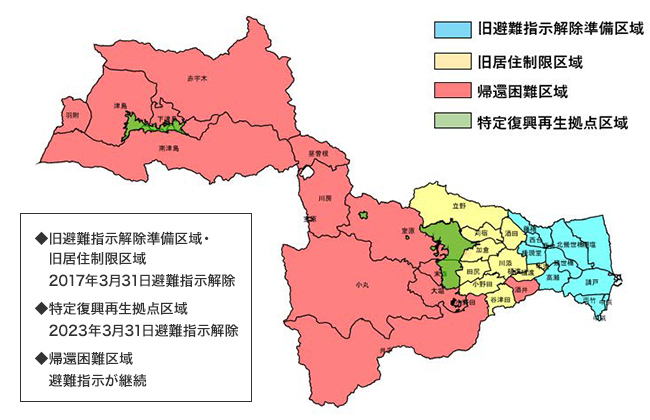
Furthermore, in January 2024, the national government approved the Reconstruction and Revitalization Plan for Designated Returning Residential Areas, and efforts to lift the restrictions on the difficult-to-return areas are proceeding step by step. Currently, many residents have been forced to live as evacuees, either inside or outside Fukushima Prefecture, and have not been able to return to their hometowns. However, the town is working to improve the environment in cooperation with the national and prefectural governments so that residents can return as soon as possible, and to encourage them to want to return as soon as possible.
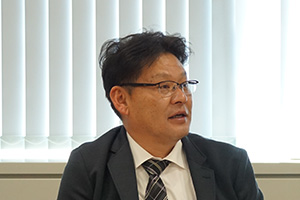
Namie Town Director Mr. Kanbara
Aihara:
Around 13 years have passed since the Great East Japan Earthquake, and we now have a good understanding of the impact and current situation in Namie Town. Next, could you tell us about the projects that Namie is currently focusing on, including from the perspective of the SDGs?
Mr. Kambara:
Namie Town was severely damaged by the nuclear power plant accident, but the town included the concept of "Community Development for Local Production and Consumption of Energy" in the Second Namie Town Recovery Plan. We are currently working to introduce renewable energy that does not rely on nuclear power or fossil fuels, and to build a smart community based on local production and consumption of energy.
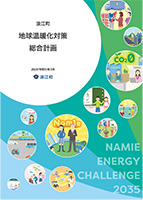
In March 2020, with the opening of the Fukushima Hydrogen Energy Research Field (FH2R), one of the world's largest hydrogen production facilities using renewable energy, where demonstration tests will be conducted in Namie Town, we made the declaration to become a "Zero Carbon City" (net zero carbon dioxide emissions by 2050).
In April 2023, Namie Town formulated the Namie Town Global Warming Countermeasures Comprehensive Plan - Namie Energy Challenge 2035 - with the goal of achieving carbon neutrality by fiscal 2035, with the aim of becoming an energy pioneer. From Namie Town, where we live, we intend to convey to the whole country and the world how each small challenge will eventually become a major movement.
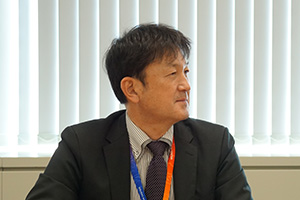
Namie Town Director Mr. Konno
Mr. Konno:
Another initiative is the Fukushima International Research and Education Organization (F-REI). Led by the Reconstruction Agency, F-REI was established in April 2023 with the aim of becoming a world-renowned "central institute for creative reconstruction" that will serve as dreams and hopes for realizing the reconstruction of Fukushima and Tohoku and contribute to economic growth and improvement of people's lives by driving the strengthening of our country's scientific and technology capabilities and industrial competitiveness. In May 2023, Namie Town and F-REI signed a basic agreement on collaboration and cooperation with the aim of contributing to the reconstruction and development of the Hamadori region in Fukushima Prefecture, the creative reconstruction of Fukushima and Tohoku, and the driving force of Japan's revitalization by promoting collaborative activities that make effective use of both sides’ resources.
Mr. Yoshida:
In recognition of these diverse new challenges, Takarajimasha won first place in two categories (General Sector, Young Households and Single Persons Sector) for towns with a population of less than 10,000 people in the 2024 edition of the 12 Best Rural Places to Live Ranking, which was announced in the February 2024 issue of the Rural Life Book published by Takarajimasha. The town will continue to make efforts to promote migration and settlement, including communicating the attractiveness of the region.
Aihara:
I now understand the projects being undertaken in Namie Town and the link to the SDGs. I feel that these initiatives will make the town attractive. Next, I would like to ask the Urban Renaissance Agency. The Urban Renaissance Agency has been issuing social bonds since fiscal 2020 and has started issuing sustainability bonds this fiscal year. Could you please explain the characteristics and purpose of the issuance of such bonds, together with your SDGs initiatives?

Urban Renaissance Agency Manager
Mr. Kawamura
Mr. Kawamura:
In order to conduct our business in an eco-friendly manner, we formulated and declared our Environmental Policy in fiscal 2005. In our 4th Medium-Term Plan, which began in fiscal 2019, we are advancing activities aimed at contributing to the SDGs and achieving a decarbonized society, including promoting measures to combat global warming and conserving and creating the natural environment in cities.
In order to promote measures to combat global warming, we formulated the UR-eco Plan 2008 in March 2008, which sets out an action plan to combat global warming. The most recent UR-eco Plan 2019, formulated in April 2019, was partially revised in July 2022 to include new goals such as standardizing ZEH-equivalent specifications and the installation of photovoltaic power generation facilities in connection with the reconstruction of rental housing, in light of changes in international trends and social trends, such as the Japanese government's declaration of carbon neutrality in 2050. A new UR-eco Plan is scheduled to be formulated in 2024.
In fiscal 2020, all of our agency's projects received a third-party evaluation as social projects that contribute to solving social issues. On the environmental front, we have been actively working for the environment in regional areas for more than 15 years, as mentioned earlier. With the concepts of SDGs and ESG investment becoming more prevalent in society these days, and with the desire to leverage our eco-friendly business execution to raise funds as well as to increase our agency's presence, we obtained a third-party evaluation for sustainability finance in March 2023 and issued our first sustainability bonds in June 2023. The sustainability bonds issued by our agency are 100% green, and all proceeds will be used for green projects. Specific examples of green projects include the conversion of UR rental housing into double-glazed buildings during renovation, the planting of trees in outdoor spaces, the transplanting and preservation of trees, and the acquisition of CASBEE and the use of natural energy in urban renewal projects. These results will be disclosed in future reports.
Aihara:
In addition to the issuance of social bonds, I believe that the issuance of sustainability bonds has expanded the options available to investors in terms of contributing not only to solving traditional social issues but also to improving the environment. I also believe that it will contribute to the diversification of procurement methods for the Urban Renaissance Agency. Next, please tell us the background behind Namie Town's decision to invest in the Urban Renaissance Agency's sustainability bonds.
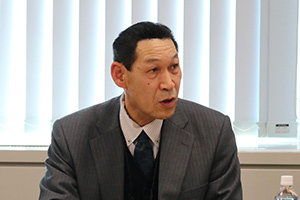
Namie Town Director Mr. Nakano
Mr. Nakano:
In Namie Town, in accordance with the aims of the Local Autonomy Law, in order to manage the fund reliably and efficiently, a portion of the funds that can be managed over the long term is invested in bonds. In recent years, I feel that there has been a growing movement among local governments to purchase SDGs bonds and declare their investment. Namie Town has also declared our intention to be a zero-carbon city, and since there is a field in which we can communicate both domestically and internationally, we have been promoting bond purchases with the intention of contributing to society. In purchasing bonds, while giving top priority to security and efficiency, we purchase SDGs bonds such as green bonds, social bonds, and sustainability bonds. When purchasing SDGs bonds, we make a "declaration of investment" which communicates our contribution to building a sustainable society both domestically and internationally.
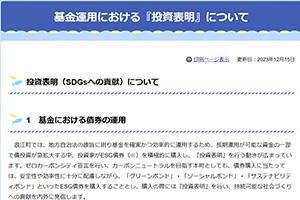
The project-related relationship with Namie Town was one of the factors behind the selection of the bonds issued by the Urban Renaissance Agency. We concluded a cooperation agreement with the Urban Renaissance Agency in March 2017 to promote the reconstruction of the town, and we received full support for the development of the Tanashio Industrial Park and the Minami Industrial Park. We are still receiving support for the improvement project around Namie Station for the reconstruction and revitalization of the downtown area. Although we had been paying attention to the project, we decided to invest in the project because the issuance of bonds with maturities was added in fiscal 2023, and the projects being undertaken by the Urban Renaissance Agency were consistent with Namie Town's investment policy.
Aihara:
The number of local governments investing in SDGs bonds has increased significantly in recent years. In addition, we can see how the deep ties between the two sides when it comes to projects has boosted investment. Please share your thoughts after hearing this from Namie Town.
Mr. Hirasawa:
We provide technical support for disaster preparedness and educational activities for recovery and reconstruction support to local governments during times of normalcy to make use of the experience we have gained in providing recovery and reconstruction support following the Great East Japan Earthquake. In addition, we provide active support to local governments in the event of a disaster. After the 2024 Noto Peninsula Earthquake, we provided technical support for the construction of emergency temporary housing and provided UR rental housing where disaster victims can live. As a sign of support for these activities, as of January 2024, we have received investment declarations from 50 local governments.
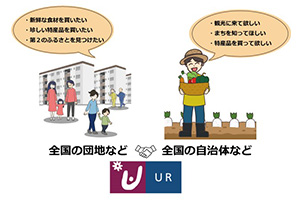
In addition, we have been promoting the UR Furusato Support Project to convey the appeal of local communities to the residents of housing complexes and other people who are involved in the Urban Renaissance Agency, and to support local governments in revitalizing their communities. This project aims to connect the many issues local governments are concerned about, such as wanting people to visit for sightseeing, get to know their communities, and buy local products, with UR housing complexes, area management districts, and facilities of UR Group companies where people from urban areas gather, and to provide opportunities and places to sell local products and promote tourism. In September 2023, as part of the UR Furusato Support Project, we opened "Machinotane," a matching space between "people" and "communities," in Nagoya City (attached to the UR Rental Shop Sakae Underground Shopping Street). This is a permanent information exchange facility designed to support the revitalization of the local economy, and many local governments have put exhibits on display there.
These projects are just a few examples, but we are implementing a variety of projects that contribute to solving social and environmental issues, and we aim to contribute to the realization of a sustainable society by utilizing the funds invested by Namie Town and others.
Aihara:
Thank you for discussing how you are working toward a common goal of revitalizing the local community while promoting recovery from the earthquake. We heard from Namie Town about the background behind the bond purchase. Do you have anything in particular that you would like to see the Urban Renaissance Agency address with the funds received through the bonds?
Mr. Nakano:
Namie Town pays attention to how funds will be used when investing in SDGs bonds. I understand that 100% of the proceeds from sustainability bonds issued by the Urban Renaissance Agency will be used for green projects. Namie Town also believes that climate change, such as warm winters and extreme heat, leads to torrential rainfall events and rising sea levels, and is an important issue related to disaster prevention and primary industries in the town. Therefore, I expect the Urban Renaissance Agency to disclose what projects the invested funds were actually used for and what impacts they had.
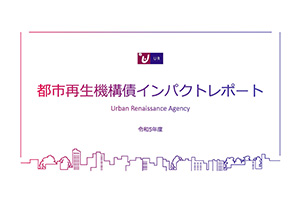
Mr. Hirasawa:
We will continue to create social value through community and lifestyle development while addressing various social issues and will continue to contribute to the SDGs. As we further promote carbon neutrality in the future, we believe investors will become more interested in the environment. Therefore, in order to continue for our bonds to be preferred in the future, we will continue to consider various possibilities for enhancing information disclosure, including appropriate impact reports. We would like investors to understand how our business contributes to solving environmental and social issues before investing. We recognize that mutual understanding through dialogue with investors, such as the engagement and IR activities that we are conducting today, is extremely important, and we will continue to actively engage in dialogue with investors.
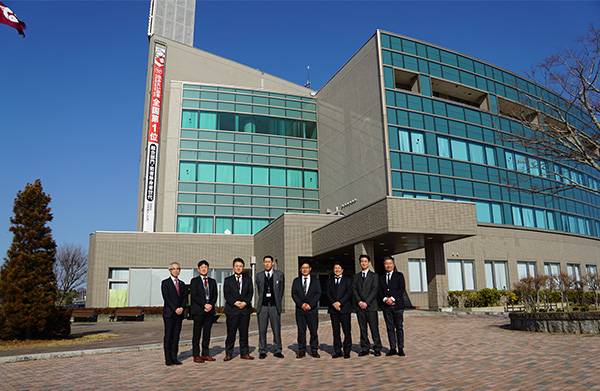
Aihara:
Lastly, I would like to ask you to provide comments to those people who are reading the text of this engagement dialogue.
Mr. Hirasawa:
Since the establishment of the Japan Housing Corporation, our agency has contributed to the realization of "cities where people shine" through the development of safe, secure, and comfortable communities and lifestyles. Social issues in recent years have become more difficult and complex, such as the declining birthrate and aging population, stagnant economies in regional areas, and increasingly severe and frequent natural disasters. By continuing to tackle these social issues, we hope to be an indispensable part of creating "cities where people shine." To that end, it is more important than ever to collaborate and partner with various entities, including local governments and private businesses. We will continue to promote solutions to social issues through collaboration and teamwork, and we hope to gain the understanding and support from as many people as possible. These are our goals.
Mr. Yoshida:
Namie Town continues to pursue new initiatives. Fishing boats propel themselves through the open ocean with flags flying. With farmers aiming for us to become the best flower town in Japan, cutting-edge technology to realize local production and local consumption of hydrogen, colorful roots, and colorful dreams, Namie Town is a place where new challenges arise every day. We will continue to develop as a town that welcomes new encounters and welcomes challengers with a warm heart. We hope that you will visit Namie Town as we overcome our hardships and head toward the future.
Aihara
We recognize that in the past, it was not common for issuers and investors to meet face to face and have an opportunity to discuss each other's business and social significance. Currently, ESG bonds account for about 40% of the bond market, but this share is on an increasing trend. Nomura will work to further promote ESG bonds that connect issuers and investors and contribute to the improvement of environmental and social issues.
